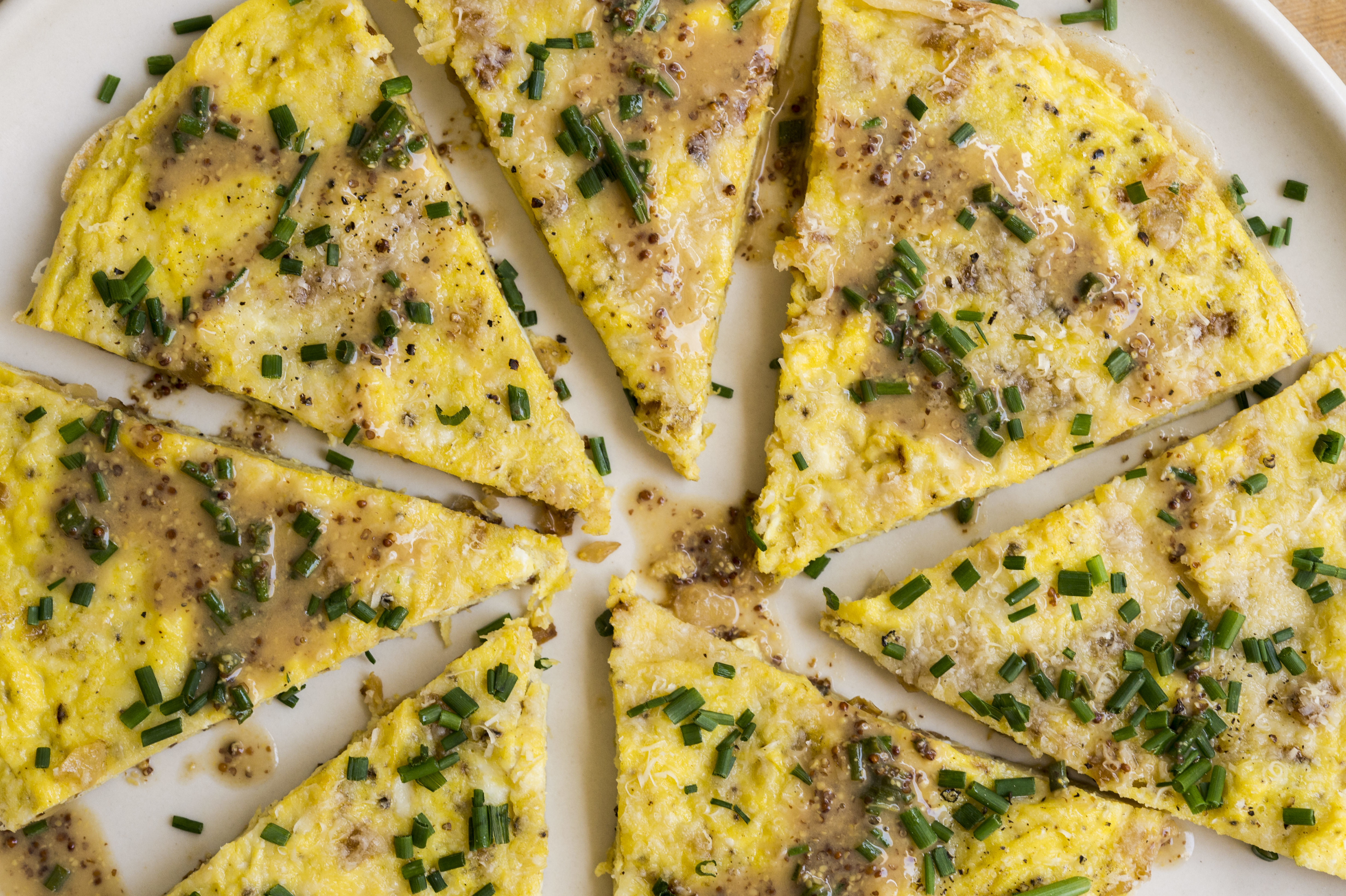Simple and direct. It’s how Deborah Madison cooks. It’s how she handles gophers.
First, the ravenous critters. Of late, they’ve overrun the lush garden—a freewheeling affair of lemon grass, lovage and vegetables—that surrounds her adobe home in Galisteo, New Mexico, 30 miles south of Santa Fe.
So the day before I visit, she and a friend caught a gopher snake, transported the wriggling leopard-spotted reptile home in Madison’s purse, then released it into the growth. Simple and, she hopes, effective.
Her vegetable-centric cooking—which has helped chart the course of American eating for decades—is equally direct, eschewing fuss or pretense in favor of basic, bold flavors built from common ingredients.
The point is made by the basic frittata we prepare in her homey kitchen, where stacks of hand-thrown pottery share space with bundles of fresh herbs set in cups of water.
I’ve cooked from Madison’s books for more than 20 years. I’m constantly impressed by her ability to transform an ingredient as simple as the egg. She does so much more than merely make them into a meal.
It’s praise she shrugs off. Madison claims to be “egg nervous.”

“I have to have things in my eggs. They have to be disguised.” To that end, the frittata we make is studded with caramelized onions and Parmesan cheese, then finished with a splash of sherry vinegar-butter sauce.
It’s from her latest cookbook, “In My Kitchen,” a quiet, confident meditation on home cooking—which is to say, easy, focused meals, stripped to their essence. Meals that are meatless effortlessly, without sacrifice.
It’s a reflection of her culinary road, which began when she was a student of Buddhism at the San Francisco Zen Center. She learned to cook simple, sustaining fare while feeding peers who were practicing long hours of meditation.
A fortuitous meeting with Alice Waters landed her a stint at Chez Panisse, where she earned the confidence to open her own place, Greens Restaurant, in 1979 before finally coming to New Mexico a decade later.
As Madison prepares the frittata, it’s clear that the move suited her. There’s an obvious harmony to her life and her cooking. She cuts onions finely, into pieces that will soften easily and not mar the tender texture of the egg.
She is unhurried, giving the onions their time and space to cook, to lightly caramelize. “People are afraid of time,” she says. But it’s as much an ingredient as the eggs or onions.
Madison also emphasizes “listening while cooking.” As the onions sauté, the sounds coming from the skillet make a distinct shift from a gentle and steady patter (like a soft rain) to a staccato snapping as the moisture evaporates.
The eggs and onions go into the pan to set up before she dusts the top with grated Parmesan and slides the pan into a toaster oven tucked into a nook in the wall. It takes just minutes for the onion frittata to brown.
Then the final flourish. She sizzles a knob of butter in the now-empty skillet (the frittata itself is cooling on a serving platter nearby) before adding a splash of vinegar and pouring the frothy mix over the frittata.
The dish is rich and balanced, the gentle kick of acid keeping the sweetness in check. It’s a success even simpler than a snake stuffed in a purse.




